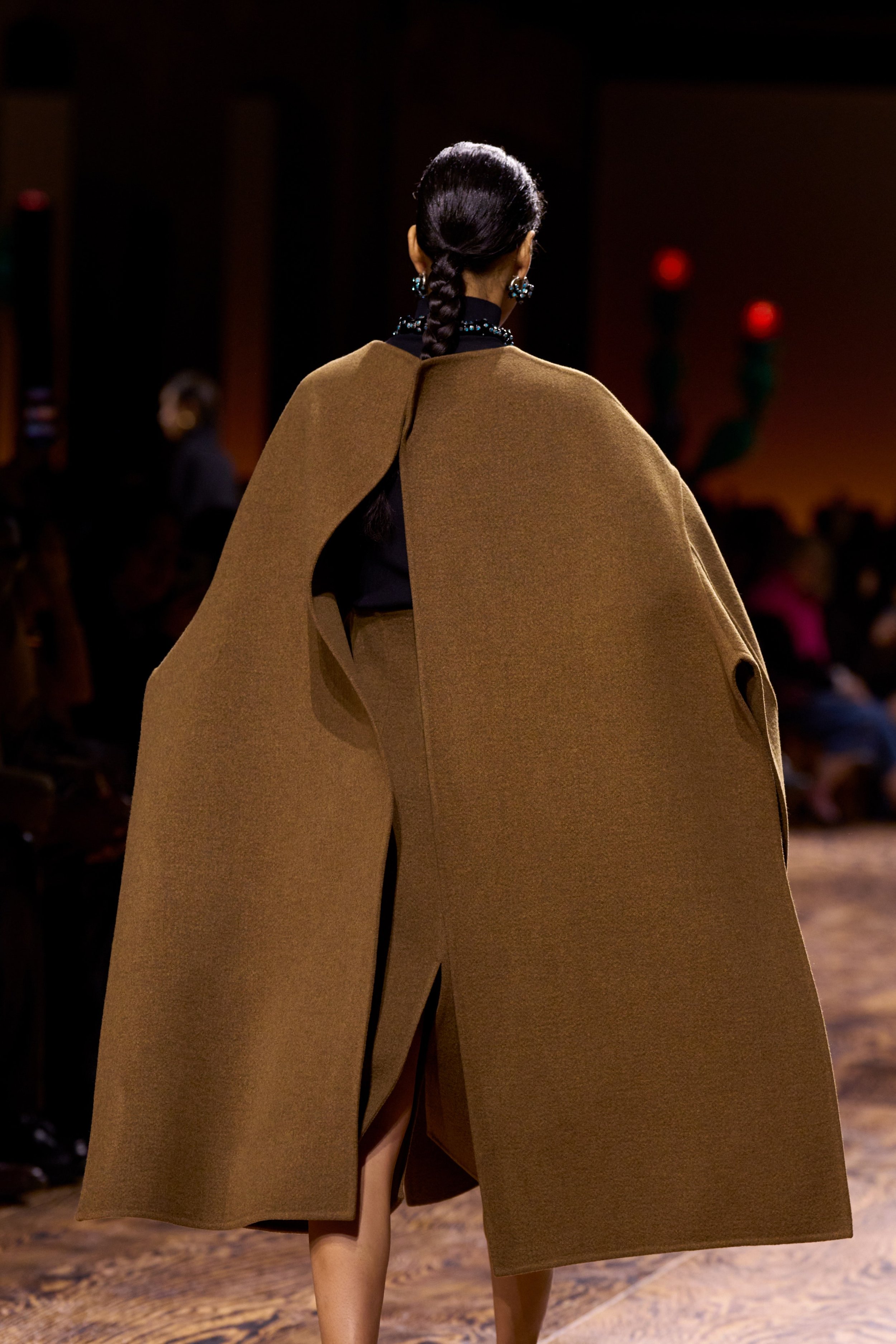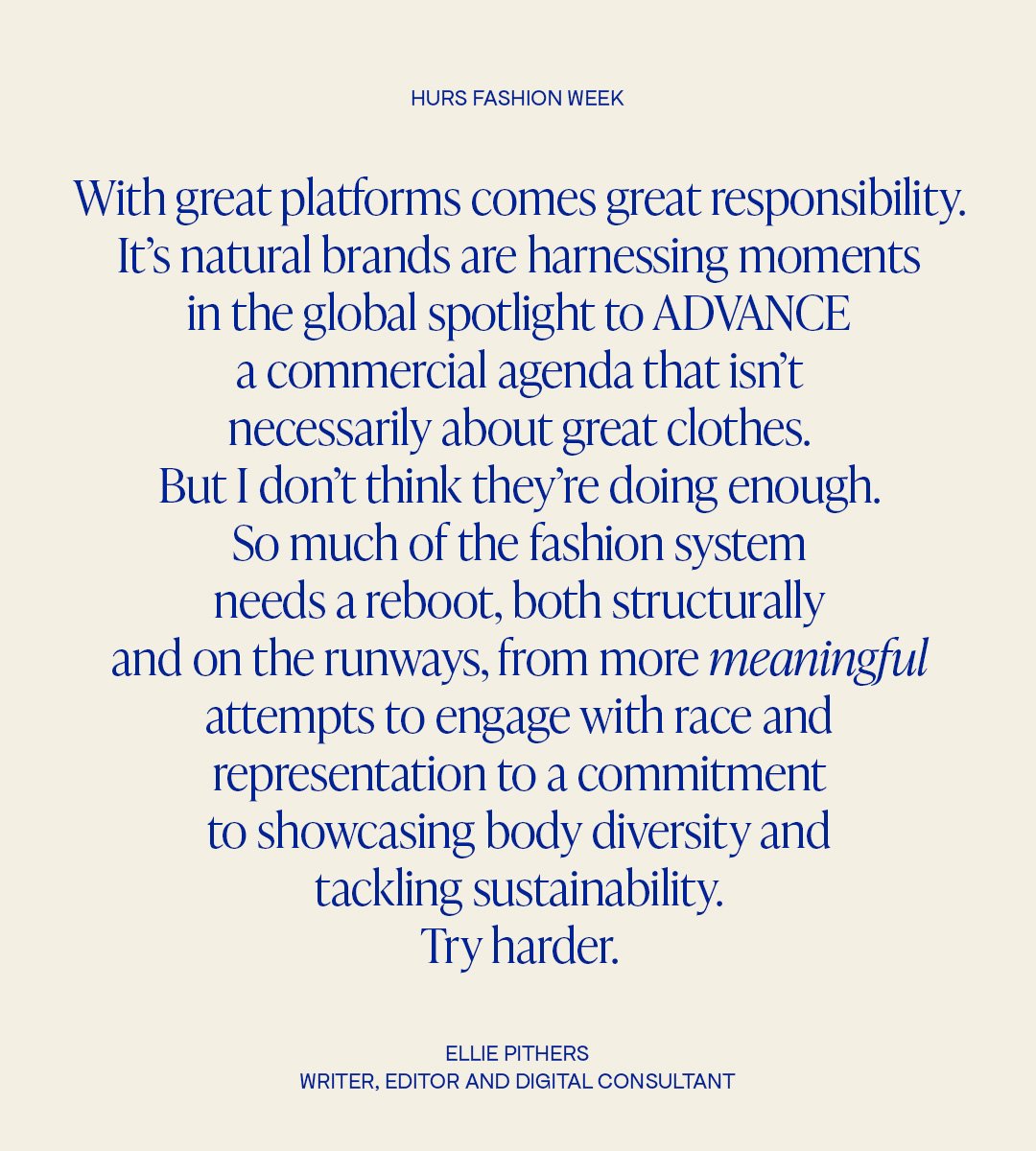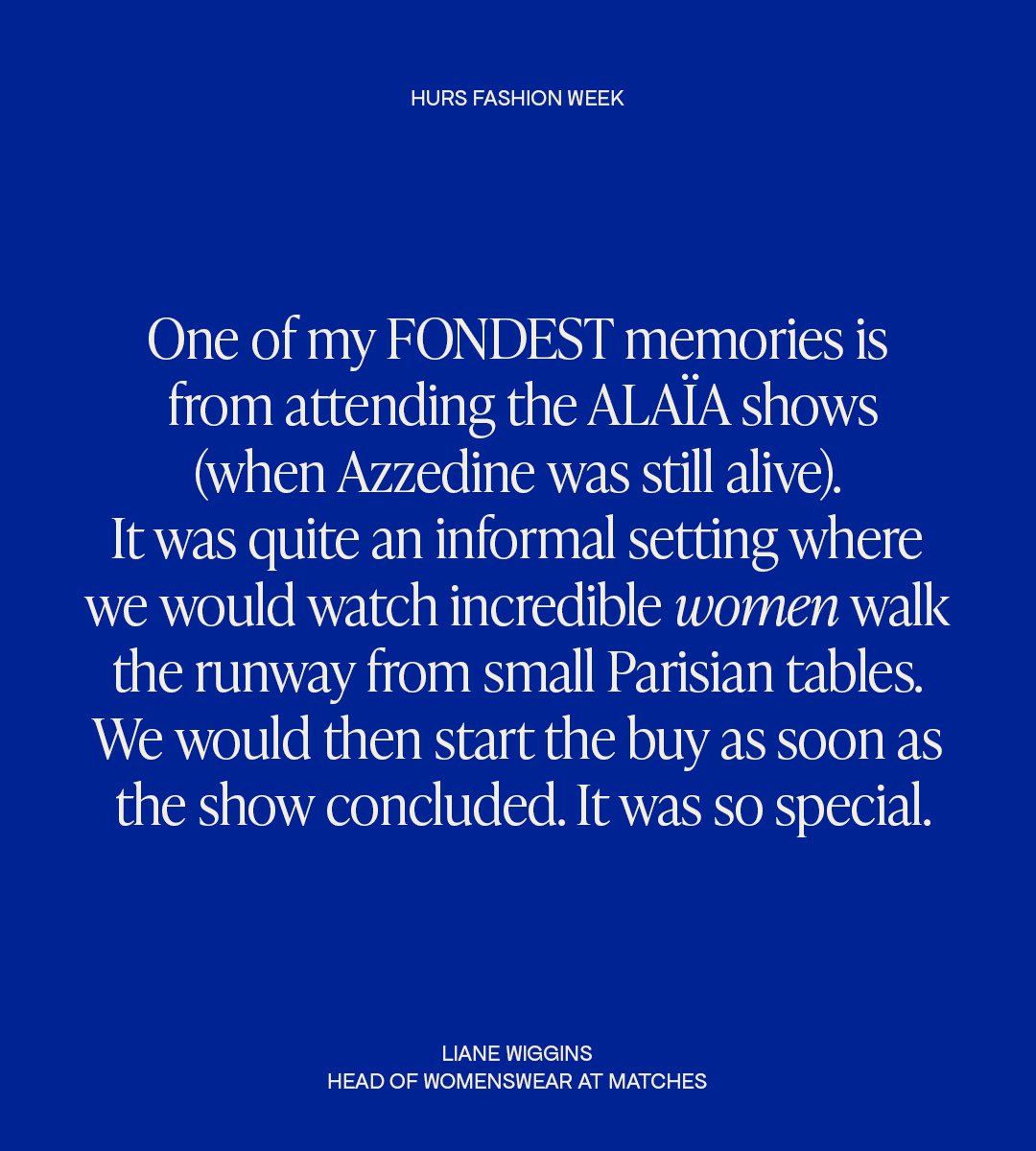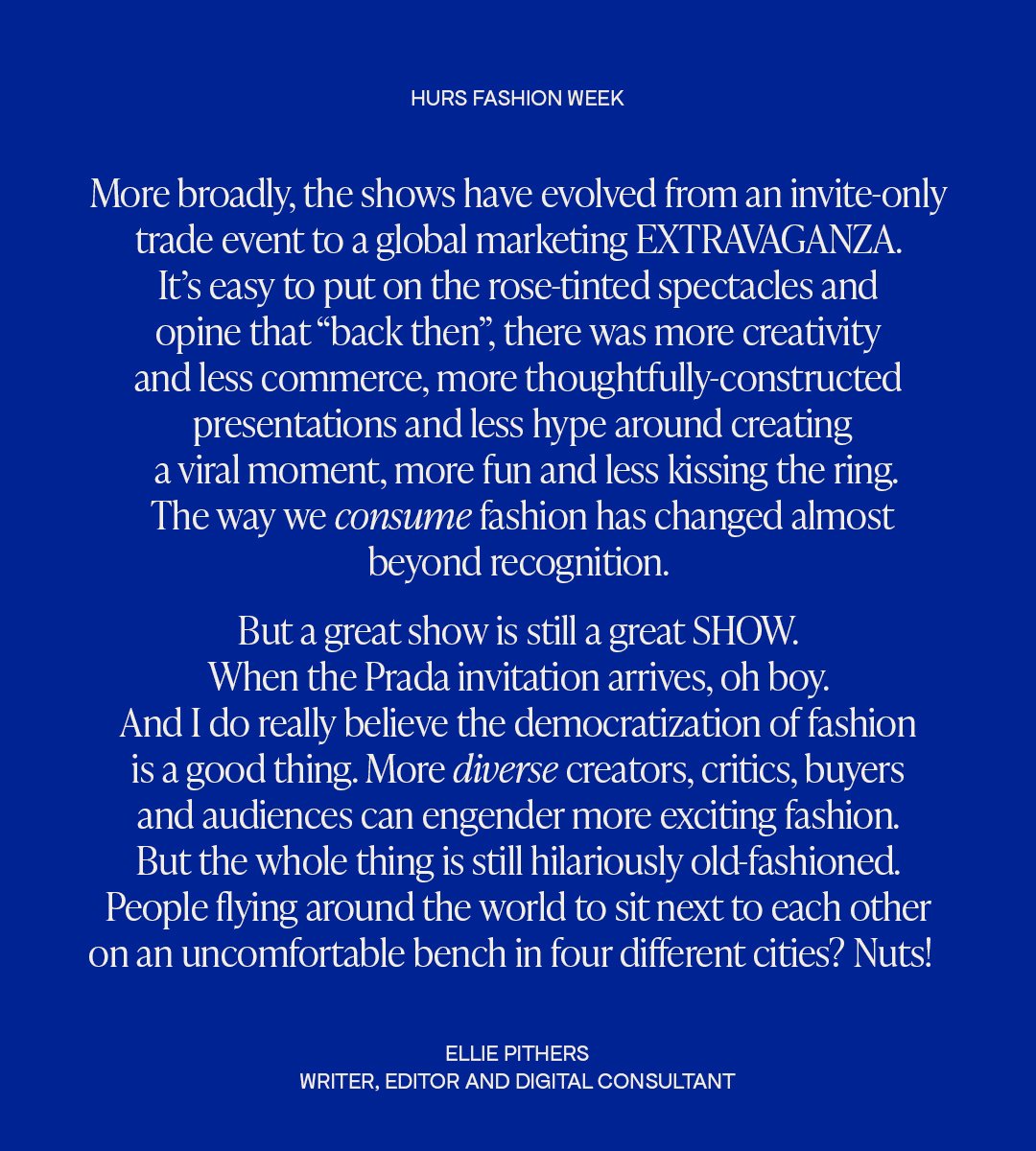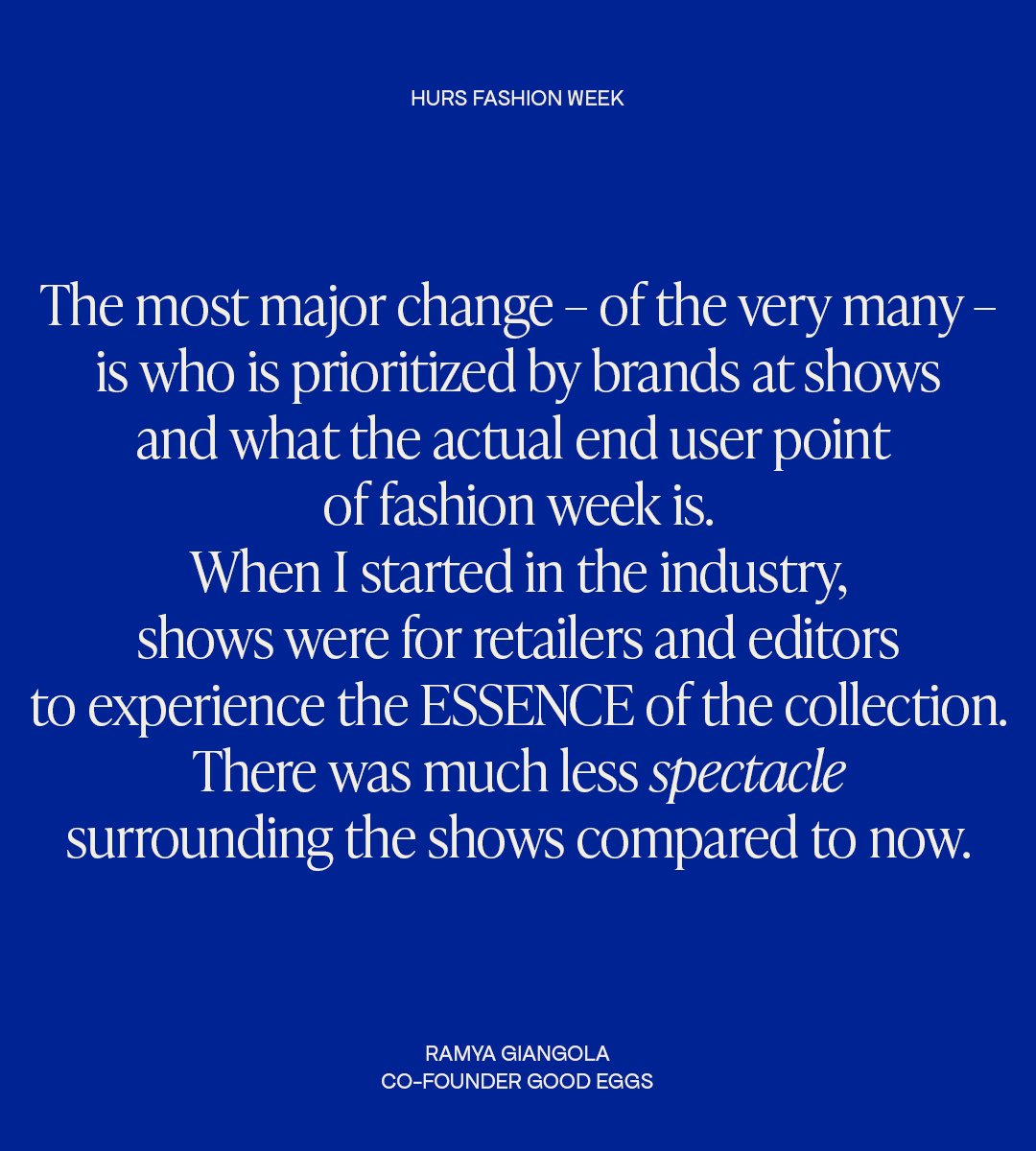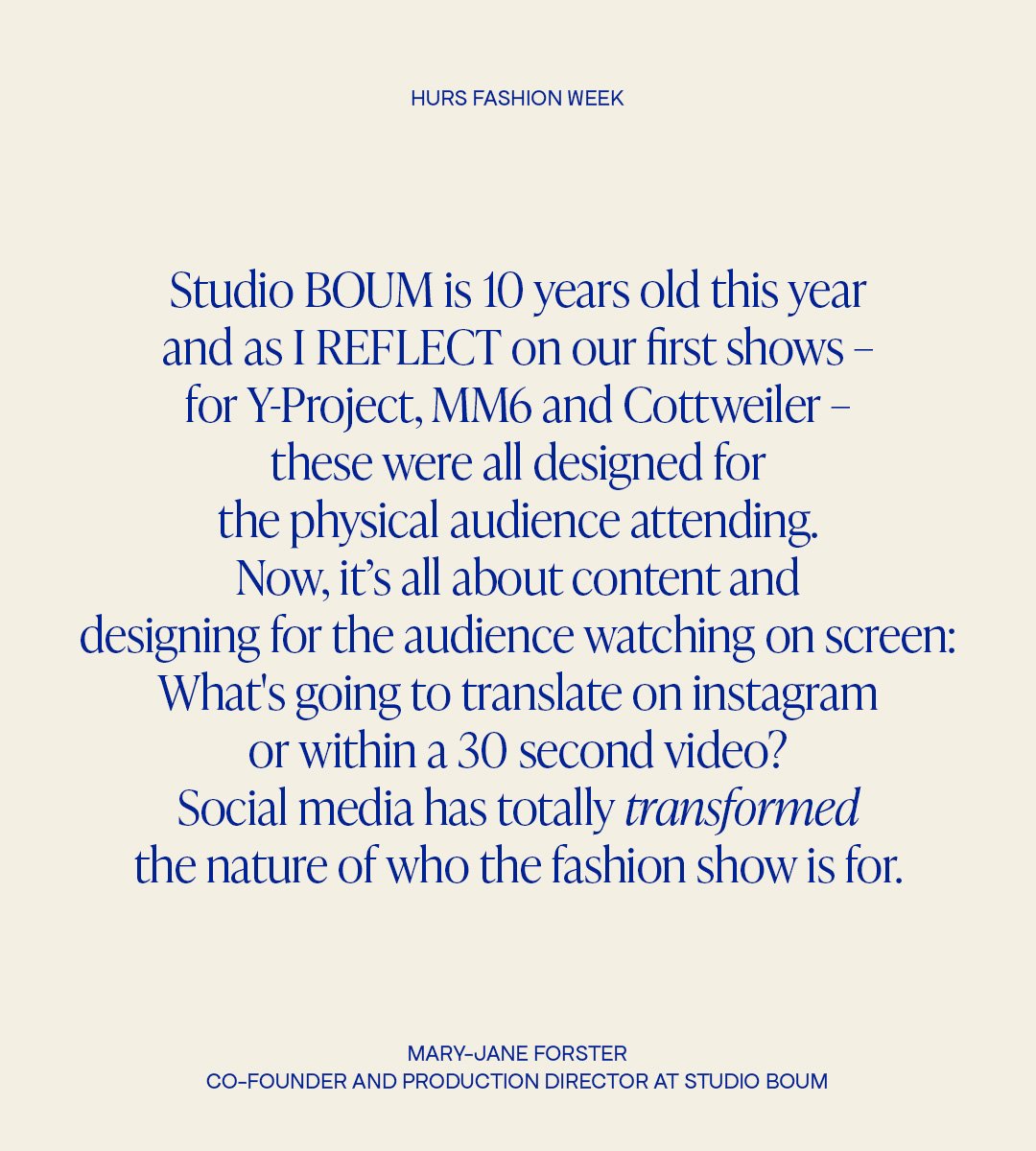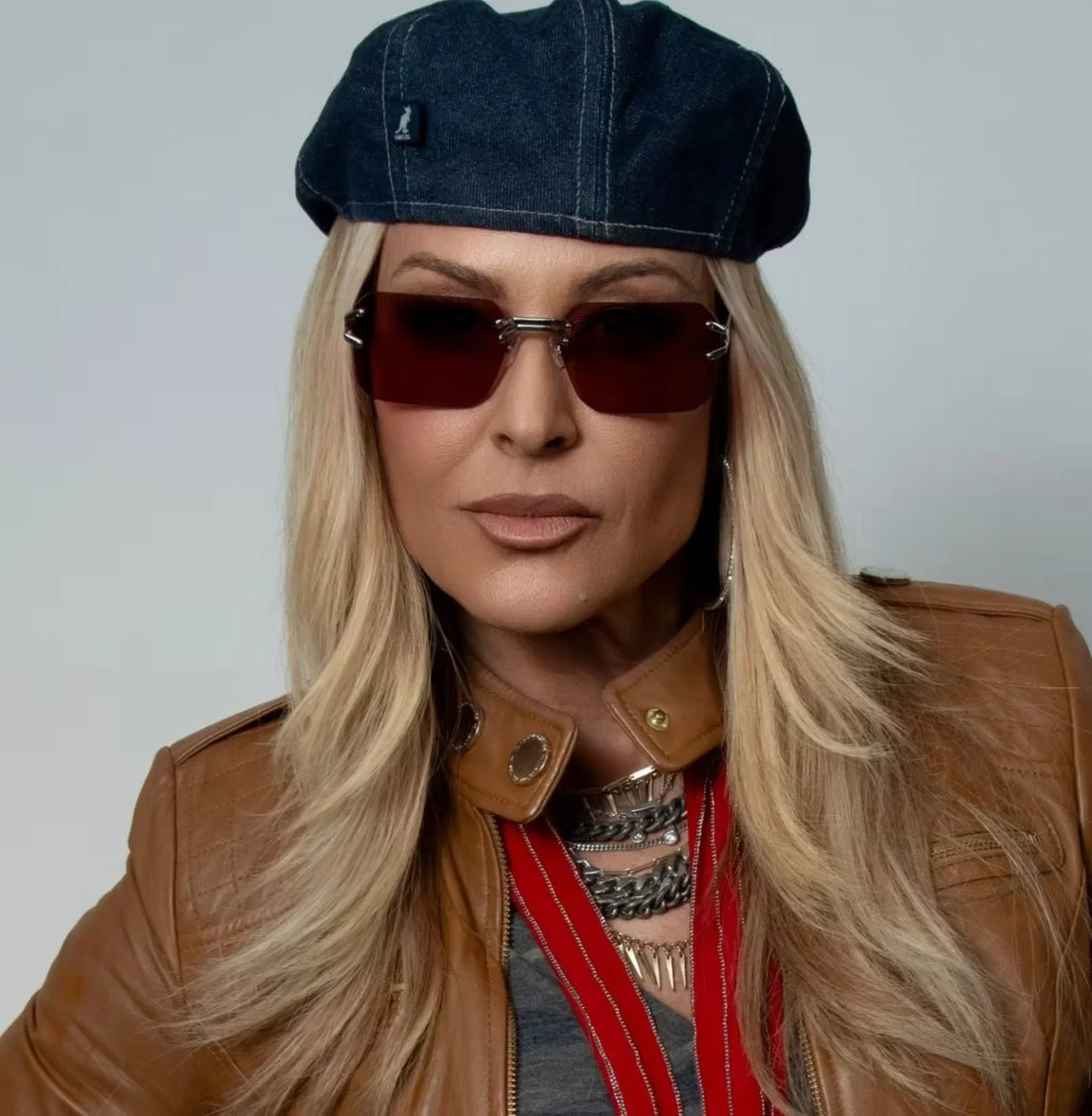In a Turn of Events, This Fashion Week Was Actually About the Clothes
Courtesy of Bottega Veneta
In a Turn of Events, This Fashion Week Was Actually About the Clothes
HURS founder Bonnie Langedijk weighs in on fashion week, and speaks to industry insiders on their thoughts on the purpose of fashion week and most importantly what the future holds.
By Bonnie Langedijk
When American luxury house The Row shared their decision to restrict showgoers from capturing their latest collection, most seemed to welcome the initiative with open arms. In a fashion world where most brands chase hype, it was refreshing for a brand to use a show as a vehicle for something other than a media moment. The Row showed we can get off this train. If we long to do so.
But the American luxury brand wasn’t the only brand who set out to do things differently. Overall, this fashion week seemed distinctively quiet. After seasons of turmoil – from the constant musical chairs of creative directors to the focus on those attending over the collections that are shown to the endless pursuit of creating a viral moment – this season there was a return to real clothes, for real people.
Ellie Pithers on fashion week.
Ida Petersson of Good Eggs on the importance of knowing who you are as a brand.
Liane Wiggins on some of her fondest fashion week memories.
Ramya Giangola of Good Eggs on the future of fashion week.
Nadège Vanhee’s motorcycle meets horseback rider collection celebrated what Hermès does best – crafting the most luxurious garments and accessories women crave – but this time through a modern lens. The pointy cowboy boots and leather coats were an instant conversation point. And while Chemena Kamali’s debut show for Chloé was a collection on the other side of the style spectrum, it delivered the same message. Clothes made with a purpose while considering who's buying it all. Similarly, Givenchy and Acne Studios made a U-turn, returning to their house codes. And why wouldn't you focus on the things people come to you for in the first place?
As the fashion industry scaled, and expectations for revenue increased, many brands lost their identity in the pursuit of growth. Trying to be for everyone became the name of the game, and with it brands lost sight of who they were and who they were for. Everything started to look the same. Instead – to create some sort of differentiation – brands focused on anything but the clothes. Competing who could create the biggest Instagram moment, curate the most star-studded front row or create the most-talked about show set. The looming uncertainty of today’s political and economic climate might have forced some to reflect and re-evaluate what’s important and how to reconnect with luxury consumers beyond social media. In a world of plenty, a distinct point of view will always triumph over trying to be like someone else.
“In a world of plenty, a DISTINCT point of view will always triumph over trying to be like someone else.”
Times of uncertainty call for familiarity. And while some brands played it too safe – Alexander Mcqueen, Moschino and Gucci come to mind – others crafted collections that were anything but boring. Diving into the deeper story behind the philosophy and DNA of the collection and brand itself. Matthieu Blazy explored how to make the everyday monumental with his latest collection for Bottega Veneta (the beautiful craftsmanship hidden in classic silhouettes sure did that for us), while continuing the conversation around art and design he first introduced when he joined the brand. The creative director tapped Cassina for the show seating for a third time, with a tailored edition of Le Corbusier’s LC14 Cabanon stool in collaboration with Fondation Le Corbusier, and included a series of large glass flowering cacti in the show – all handmade on the island of Murano in Venice.
Ida Petersson of Good Eggs on how fashion week has changed.
Ellie Pithers on how fashion week has evolved.
Ramya Giangola of Good Eggs on the value of fashion week.
Mary-Jane Forster of Studio BOUM on finding a fashion week format that works for you and your business.
Jonathan Anderson is another designer known for his love of the arts. This time, he showcased his Loewe collection alongside a presentation of the work of Albert York – a painter known for capturing the humble moments of the everyday. And Raf Simons mentioned the importance of looking at the past to understand who we are today in creating Prada’s latest collection. With it, reinventing the house's historic looks for today’s world. And to go circle back to The Row, they did provide those attending with notebooks – but not just any notebook. It was a Midori MD paired with a Blackwing Matte 602 pencil, the writing utensil of choice among connoisseurs including Lydia Tàr, Stephen Sondheim and John Steinbeck.
These designers’ understanding of their brands’ USP and the ability to leave cultural bread crumbs for the consumer to explore in their own time, is what gives these brands and creative directors their edge. It’s allowed them to create consistency while always delivering something new.
Ellie Pithers on how fashion week hasn’t evolved.
Liane Wiggins of Matches Fashion on how brands should approach fashion week.
Ramya Giangola of Good Eggs on the biggest shifts in fashion week since she started working in the industry.
Mary-Jane Forster of Studio BOUM on how the focus of who the show is for has shifted.
While we admire the brands choosing point of view over following the masses, there’s more to be done. For those who are truly interested in deepening and expanding their brand universe, it might be time to reassess the purpose of the fashion show. Maybe it’s no longer an event solely for press and buyers, and instead a way to connect to the most loyal fans, collaborators and talent – Rick Owens is the one who leads the way here – or it’s a design salon rather than a traditional runway show – like Dan Thawley’s Matter & Shape which included brands like Jil Sander, Perfumer H and Rare Books Paris. There are endless opportunities to rewrite the blueprint, from the format to the content roll-out to who’s invited. It seems we’re only just getting started.
